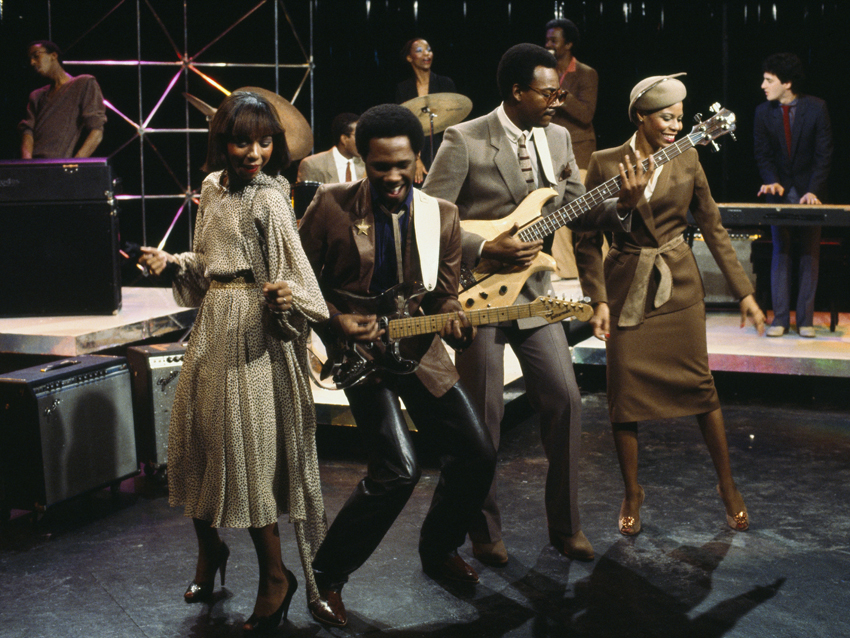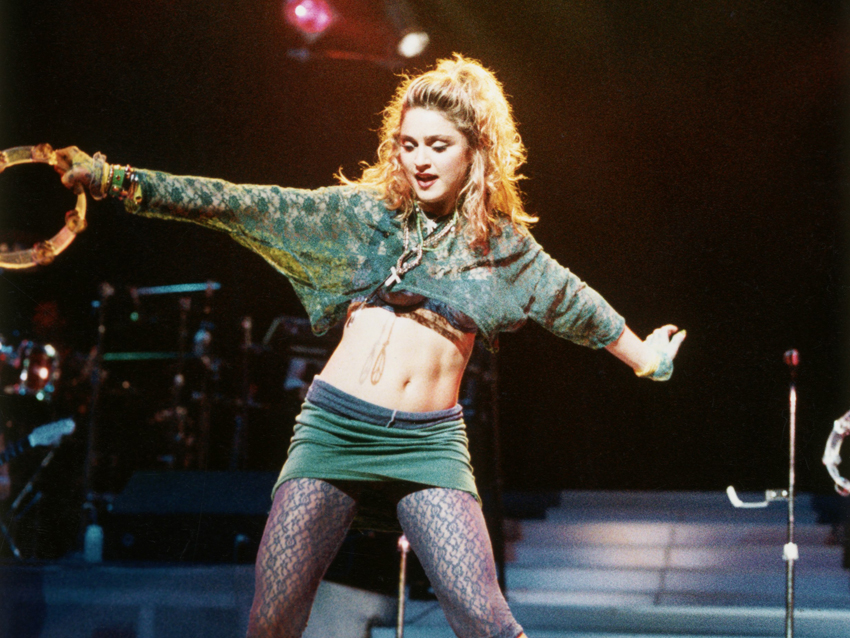Nile Rodgers on the Hitmaker, Daft Punk and Hendrix
Chic legend shares his Strat's secrets

Nile Rodgers on 'the hitmaker', history and hits"
The name says it all – the Hitmaker. The moniker given to Nile Rodgers’ 1959 (or is it 1960? More on that later) Strat perfectly encapsulates the funk legend's knack for pumping out radio-friendly riffs.
Unless you’ve been trapped under a rock all summer (and even then…) you'll have heard the Hitmaker’s latest work, as Nile and his trusty Strat supplied the hook for Daft Punk’s uber smash Get Lucky. Dig a little deeper and you’ll find that the guitar can be heard on records from the likes of Madonna, David Bowie, Diana Ross and, of course, Chic. Not a bad little CV, right?
So, when we spoke to the funk master we wanted to know the secrets and stories behind the billion dollar guitar...
The Chic Organisation: Up All Night is out now - for more information, visit the official Nile Rodgers website.

The history
“I got the Hitmaker from Miami Beach. It was at this little shop, I think it was on Federal Highway. It was the only maple-necked Strat that was somewhere within my price range - I wanted it to be a maple neck because I loved Hendrix.
"It was an odd colour that I didn’t like but I figured I could re-finish it. With the price of the re-finishing job and the fact that I traded my jazz guitar in for it, I got money back and wound up doing really great with that deal!
“I didn’t know anything about Strats other than the fact that Clapton played one, Ike Turner played one and Hendrix played a white one with a maple neck, which is what mine eventually wound up being. I wanted to make mine antique white like his, so I had to have it finished that colour. In other words, I wanted it to look old the day that I bought it.”

The magic
“I picked up this Strat and it wound up being the most unique instrument that I’ve ever touched. Even though I thought that it was a 59, it was only a 59 neck, it was a 60 body so it was shielded.
"That was the year that Fender started officially shielding their guitars. It had a 59 serial number, but this particular guitar was made from a shipment of wood that Fender would never use ever again because it was too expensive. They thought they were doing a deal and bought a shipment of wood, but the price that they paid for it was not the delivered price, they had to go pick it up.
"When they went to get the wood they realised that it wasn’t at sea level, the guy’s farm was up a mountain. That made it too expensive to go and get it! The other unique property is that because it wasn’t at sea level the wood wasn’t nearly as moist, so it is as light as a feather.
My guitar weighs nothing compared to a regular Strat. Had I known any of this stuff I would have said, ‘No, it’s not a regular Strat, I don’t want that.’ But that is what makes it so amazing because if you listen to my guitar compared to any other Strat, they don’t sound the same.”

Daft Punk - Get Lucky
“When we started recording they [Daft Punk] specifically asked how I got the sound when I did Chic records. I showed them exactly how we did it.
"I showed them the signal path, the technique and the guitar involved. Here’s something really interesting, once I realised that I couldn’t buy enough Strats to sound like my Hitmaker, I had one custom made, which is the Plexiglass Strat, that is one that you see me playing a lot.
"That achieves the sound of my Hitmaker but we do it electronically. When I double my guitar on Get Lucky I was doubling it with the Plexiglass Strat. When you see me playing that guitar and it sounds like the Hitmaker, that is because of the pick-up configuration.
“I couldn’t be happier with how that track came out, not for me, because for me it is just my normal job, but I am really happy for Daft Punk because they were the ones that took the huge risk.”

Chic - Good Times
“My memory of that track is as clear as a bell, I wrote that song early in the morning. Bernard [Edwards, bass] showed up at the studio a little later, around an hour after the rest of the band.
"He walked in and said, ‘What the hell is that they’re doing?’ He walked in and started playing, I screamed over the drums, ‘Walk, walk.’ The bass line he was playing originally sounded like he was copying my part, that is what we would do.
"Once I shouted he came up with that bass line and it was perfect. I screamed out to the engineer, ‘Make it red!’ and we recorded it in one take. There are a lot of tracks in my life that have been one take recordings, like Original Sin by INXS, after we did that take the drum head broke and we couldn’t get the groove again so we kept the first one.
"That comes from the world where black musicians had much smaller budgets than white musicians. Let’s Dance was made like a black record. We’d go in there, spend eight hours and leave.”

David Bowie - Let's Dance
“The risk that Daft Punk took was very similar to the risk that David Bowie took when we did Let’s Dance - they had no record label, they had no nothing and they chose a guy that’s not hot.
"What I do isn’t to trend or what’s going on, electronic dance music is the trend so to come to me is exactly the wrong thing to do. David Bowie came to me after Disco Sucks, that was exactly the wrong thing to do on paper, but it wound up being the right thing to do.
"It shows, I guess, on some level that organic dance music really still speaks to people. Working with David Bowie was amazing, it was one of the best periods of my life. How about this, in 17 days we finished that album, totally from start to finish, it was never touched again.
"And in doing that we introduced Stevie Ray Vaughan to the world. So in 17 days not only did we do Let’s Dance, which is pretty great in itself, but also China Girl, Modern Love, all of that stuff and the world became aware of Stevie ray Vaughan.”

Madonna - Like A Virgin
“Madonna was awesome. That record was made in a matter of weeks. She was, and to me still is, the hardest working person and certainly the most focused person I have ever worked with.
"From the moment we met and started working together she was hell bent on becoming the biggest star in the world. I had never met anyone like that before. That kind of tenacity and focus is rare and really special.
“I believe that I knew the record company’s artist better than the record company did. I point that out because the deal that we struck was so lucrative for me, so heavily in my favour because I told them before she recorded a note that I could deliver an album that would at least sell five million copies. They thought that was hysterical. They were going, ‘Nile her first album is great, but she’s only sold 750,000 copies.’ The concept of going from 750,000 to five millions to them was hysterical. Well, 21 million albums later…”
Rich is a teacher, one time Rhythm staff writer and experienced freelance journalist who has interviewed countless revered musicians, engineers, producers and stars for the our world-leading music making portfolio, including such titles as Rhythm, Total Guitar, Guitarist, Guitar World, and MusicRadar. His victims include such luminaries as Ice T, Mark Guilani and Jamie Oliver (the drumming one).
